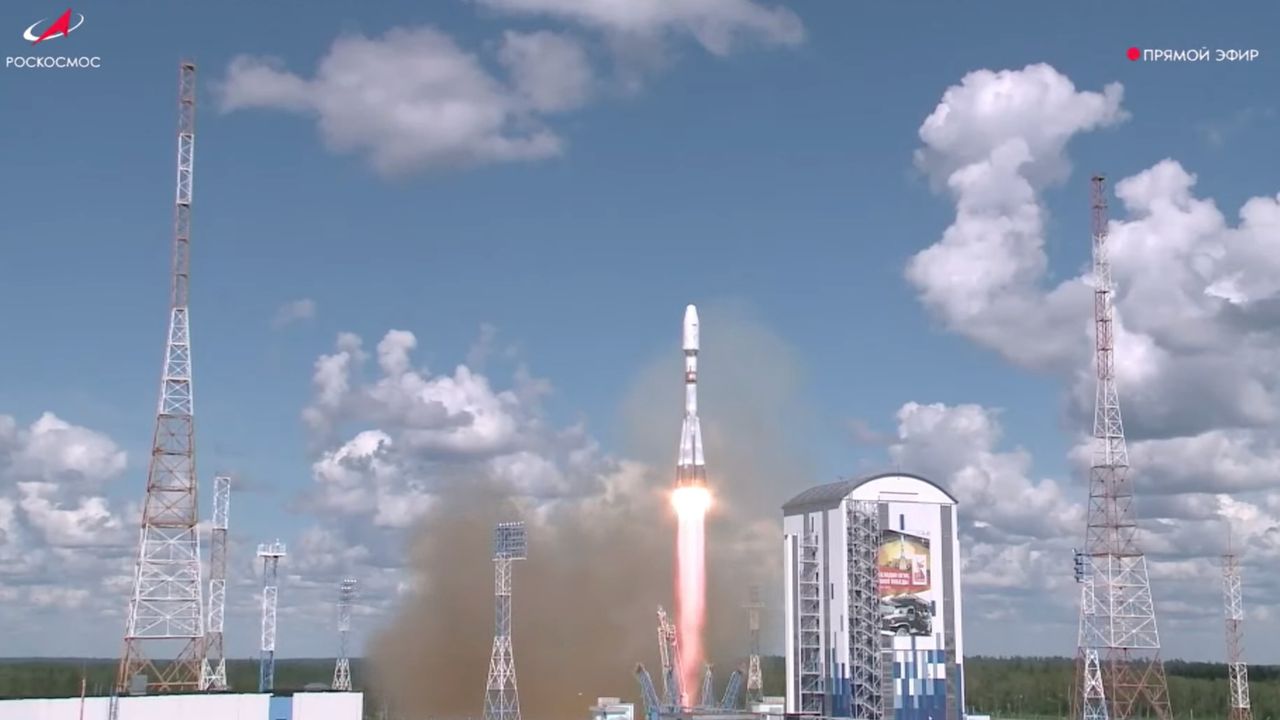Science
Russia Launches Satellite for Iran Alongside Space Weather Probes

A Russian rocket successfully launched into space on July 25, 2024, carrying two space weather satellites alongside an Iranian communications satellite and additional cubesats. The Soyuz 2.1b rocket lifted off from the Vostochny Cosmodrome in Siberia at 1:54 a.m. EDT (0554 GMT; 8:54 a.m. Moscow time), marking a significant achievement for both Russian and Iranian space initiatives.
The primary payload consisted of the Ionosfera-M 3 and Ionosfera-M 4 satellites, which are designed to monitor space weather phenomena. According to RussianSpaceWeb.com, the launch also included the Nahid-2 satellite, contributing to Iran’s communications capabilities. The initial stages of the launch proceeded smoothly, with the Russian space agency Roscosmos providing a live stream of the event, although updates on satellite deployments will follow as the agency releases additional information.
Understanding the Ionosfera-M Satellite Mission
The two newly launched Ionosfera-M satellites will join their predecessors, which were launched in November 2024. Together, these four satellites will form a mini constellation operating at an altitude of approximately 509 miles (820 kilometers) above Earth. Their mission focuses on studying the ionosphere, a critical layer of the atmosphere that lies between 50 to 400 miles (80 to 645 kilometers) above the surface.
As solar activity impacts the ionosphere, the Ionosfera satellites will play a crucial role in understanding how solar wind affects both civilian and military systems on Earth. The newly launched satellites will also include advanced instruments, such as the Ozonometr-TM, which will measure ozone levels in the upper atmosphere. This addition aims to enhance the three-dimensional coverage of Earth’s magnetosphere.
Additional Payloads and Future Implications
In total, the Soyuz rocket carried 18 secondary payloads, all of which are Russian-built cubesats. Among these are one 16U cubesat and 16 smaller 3U craft, which will engage in various remote-sensing tasks and other scientific work in orbit. Each “U” represents a standard cubesat unit, measuring approximately 10 centimeters (about 4 inches) on each side.
The successful launch not only underscores advancements in Russia’s space capabilities but also highlights cooperative efforts in space exploration, particularly with Iran. The deployment of these satellites is expected to enhance capabilities in weather monitoring and communications, reflecting the growing significance of space technology in global security and civilian applications. As Roscosmos continues to provide updates, the implications of this mission for both countries will become clearer in the coming weeks.
-

 Lifestyle5 months ago
Lifestyle5 months agoLibraries Challenge Rising E-Book Costs Amid Growing Demand
-

 Sports5 months ago
Sports5 months agoTyreek Hill Responds to Tua Tagovailoa’s Comments on Team Dynamics
-

 Sports5 months ago
Sports5 months agoLiverpool Secures Agreement to Sign Young Striker Will Wright
-

 Lifestyle5 months ago
Lifestyle5 months agoSave Your Split Tomatoes: Expert Tips for Gardeners
-

 Lifestyle5 months ago
Lifestyle5 months agoPrincess Beatrice’s Daughter Athena Joins Siblings at London Parade
-

 Science4 months ago
Science4 months agoSan Francisco Hosts Unique Contest to Identify “Performative Males”
-

 World5 months ago
World5 months agoWinter Storms Lash New South Wales with Snow, Flood Risks
-

 Science5 months ago
Science5 months agoTrump Administration Moves to Repeal Key Climate Regulation
-

 Business5 months ago
Business5 months agoSoFi Technologies Shares Slip 2% Following Insider Stock Sale
-

 Science5 months ago
Science5 months agoNew Tool Reveals Link Between Horse Coat Condition and Parasites
-

 Sports5 months ago
Sports5 months agoElon Musk Sculpture Travels From Utah to Yosemite National Park
-

 Science5 months ago
Science5 months agoNew Study Confirms Humans Transported Stonehenge Bluestones









